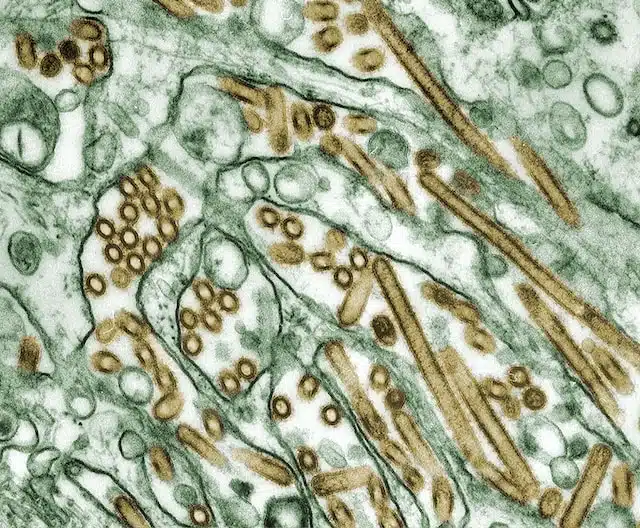
The Burden of Bronchiectasis
Bronchiectasis presents a significant health challenge worldwide. This condition is characterised by a permanent enlargement of the airways. It results in a chronic cough, fatigue, and persistent chest infections. Current treatments help manage symptoms and control infection but do not offer a permanent solution to the presence of colonising bacteria. However, there is emerging potential in a novel approach coming soon: the use of phages.
What are Phages? Nature’s Tiny Soldiers
Bacteriophages, often simply referred to as phages, are a type of virus that exclusively infect bacteria. They represent the most abundant biological entities on the planet. In essence, phages are bacteria’s natural predators.
Structure of Phages
Phages possess a simple structure. They comprise genetic material (DNA or RNA) encased in a protein shell, called a capsid. Some phages have an additional layer called an envelope. Their shapes can vary, but one common form has an icosahedral (20-sided) head and a tail structure, making them resemble miniature lunar landers.
The Life Cycle of Phages
Phages have two primary types of life cycles: the lytic cycle and the lysogenic cycle.
In the lytic cycle, the phage attaches to a specific bacterium, injects its genetic material, and hijacks the bacterium’s machinery to replicate itself. Once replication is complete, the newly created phages burst out of the bacterium, effectively killing it. These new phages then seek out other bacteria to infect.
In the lysogenic cycle, the phage’s genetic material integrates into the bacterial DNA rather than immediately killing the bacterium. This integrated phage DNA, known as a prophage, can remain dormant and replicate along with the bacterium’s DNA when the bacterium divides. Under certain conditions, the prophage can switch to the lytic cycle, becoming active and killing the host bacterium.
The Specificity of Phages: A Double-Edged Sword
One of the reasons why phages are attractive as a form of therapy is their remarkable specificity. Unlike antibiotics that may affect a wide range of bacteria, both harmful and beneficial, a phage will typically infect one specific type or strain of bacteria.
This specificity enables highly targeted treatment. If you know which bacterium is causing an infection, you could potentially use a specific phage to eliminate it without disturbing other beneficial bacteria in the body. This approach could minimise side effects often associated with traditional antibiotics, like digestive issues resulting from harm to the gut microbiota.
However, this specificity can also be a challenge. With the immense diversity of bacteria, identifying the correct phage for each bacterium can be complex. Also, bacteria can evolve and become resistant to phages, just like they can with antibiotics. To overcome this, a cocktail of different phages is often used in therapies to target a broader range of bacterial strains and reduce the chance of resistance.
Phages and the Human Immune System
Another aspect of phage therapy that’s being researched is how the human immune system responds to phages. While early research indicates that phages are generally well-tolerated, the immune response can vary, potentially affecting the success of the therapy. The immune system might neutralise phages before they can eliminate the bacteria, or, conversely, an overactive immune response to the therapy could lead to inflammation or other side effects.
Phages in Bronchiectasis Treatment: A Ground-breaking Technique
New research is focusing on the application of phages in bronchiectasis treatment. Scientists are now employing phages to target and destroy bacteria responsible for lung infections in bronchiectasis patients. This targeted approach could drastically improve the patient’s quality of life. So far this has been in individual cases, as experimental treatment or on compassionate grounds.
Benefits of Phage Therapy in Bronchiectasis Treatment
Phage therapy offers several benefits over traditional treatments. Firstly, the specificity of phages means fewer side effects and a reduced likelihood of creating antibiotic-resistant bacteria. Furthermore, phages are self-replicating, so their numbers increase at the site of infection, enhancing their effectiveness.
Phages vs Antibiotics
Unlike antibiotics, which often have a broad range of effects on various bacteria, phages are much more selective. This targeted approach reduces the risk of disturbing the patient’s overall microbiome, a key concern with long-term antibiotic use. The reduced disturbance to the microbiome can lead to fewer side effects, a crucial aspect for patients with chronic conditions like bronchiectasis who may require long-term treatment.
Moreover, phages possess the unique ability to self-replicate at the infection site. They continue to increase in numbers as long as their specific host bacteria are present. In contrast, antibiotics are metabolised and excreted, requiring repeated dosing to maintain effective concentrations.
Challenges and Future Directions of Phages in Bronchiectasis Treatment
Although the use of phages in bronchiectasis treatment offers immense promise, it is not without challenges. Regulation, production, and the establishment of precise dosages are some of the issues that need addressing. However, the potential benefits of this innovative approach make it an exciting field for future research.
GET IN TOUCH
Schedule a Visit
Disclaimer: The information provided in this article is for informational purposes only and is not a substitute for professional medical advice, diagnosis, or treatment. Always seek the advice of your healthcare provider with any questions you may have regarding a medical condition or treatment.

